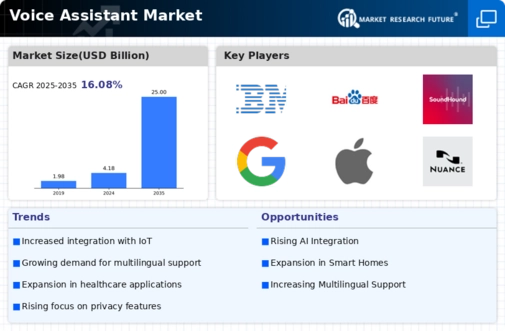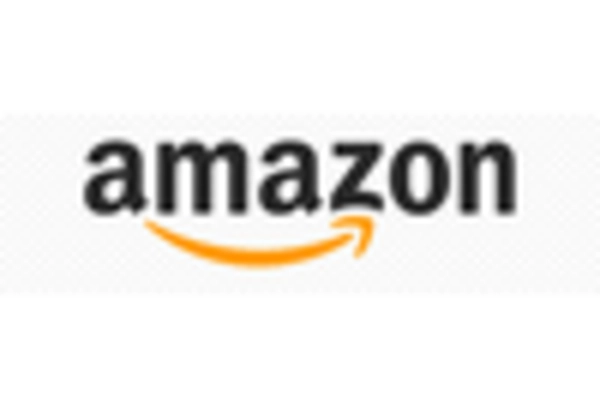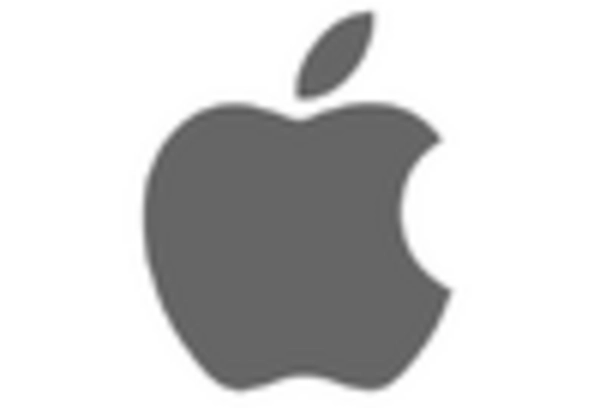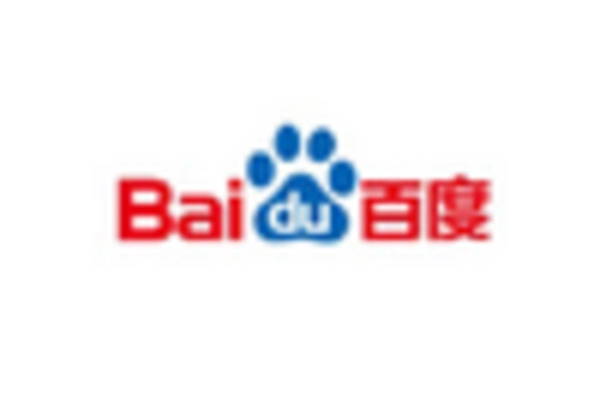Expansion of Smart Home Ecosystems
The expansion of smart home ecosystems is a pivotal driver for the Voice Assistant Market. As more households adopt smart devices, the integration of voice assistants into these ecosystems becomes increasingly prevalent. Recent data indicates that approximately 50 percent of households now utilize at least one smart device compatible with voice technology. This trend not only enhances user convenience but also fosters a more interconnected living environment. The Voice Assistant Market stands to benefit from this growth, as consumers seek cohesive solutions that allow for seamless control of their smart home devices through voice commands.
Rising Demand for Voice-Activated Services
The Voice Assistant Market experiences a notable surge in demand for voice-activated services across various sectors. As consumers increasingly seek convenience and efficiency, businesses are integrating voice technology into their operations. For instance, the retail sector has reported a 30 percent increase in customer engagement through voice-activated shopping assistants. This trend is not limited to retail; healthcare providers are also adopting voice assistants to streamline patient interactions, potentially reducing administrative burdens. The growing reliance on voice technology suggests that the Voice Assistant Market is poised for substantial growth, driven by the need for seamless user experiences and enhanced operational efficiency.
Advancements in Natural Language Processing
Advancements in Natural Language Processing (NLP) are significantly shaping the Voice Assistant Market. Enhanced NLP capabilities enable voice assistants to understand and respond to user queries with greater accuracy and context. This improvement is evidenced by a reported 40 percent increase in user satisfaction ratings for voice assistants that utilize advanced NLP algorithms. As technology evolves, the ability of voice assistants to engage in more natural conversations is likely to attract a broader user base. Consequently, the Voice Assistant Market is expected to expand as businesses leverage these advancements to improve customer interactions and drive user adoption.
Growing Interest in Multilingual Capabilities
The growing interest in multilingual capabilities is emerging as a significant driver in the Voice Assistant Market. As businesses expand their reach into diverse markets, the demand for voice assistants that can understand and respond in multiple languages is increasing. Recent surveys suggest that over 70 percent of consumers prefer voice assistants that can communicate in their native language. This trend indicates a potential for the Voice Assistant Market to diversify its offerings, catering to a wider audience and enhancing user satisfaction. Companies that invest in multilingual capabilities may gain a competitive edge in this evolving landscape.
Increased Adoption in Automotive Applications
The increased adoption of voice assistants in automotive applications is reshaping the Voice Assistant Market. As vehicles become more technologically advanced, manufacturers are incorporating voice recognition systems to enhance driver safety and convenience. Reports indicate that nearly 60 percent of new vehicles are now equipped with some form of voice assistant technology. This integration allows drivers to access navigation, music, and communication features without taking their hands off the wheel. The Voice Assistant Market is likely to see continued growth as automotive companies prioritize voice technology to meet consumer demands for safer and more intuitive driving experiences.


















Leave a Comment